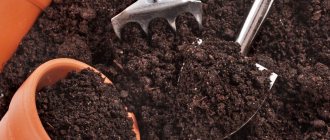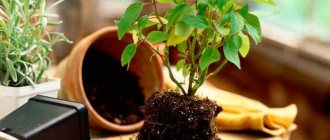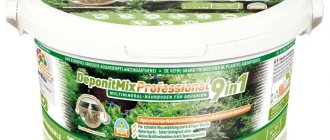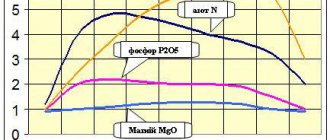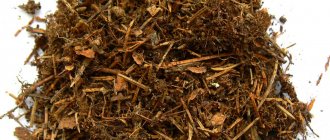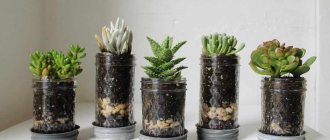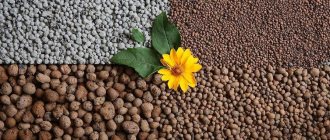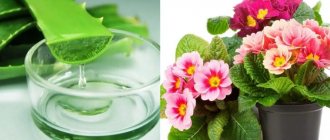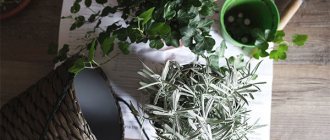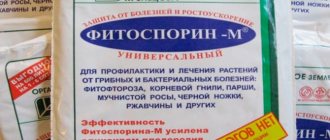The better soil prepared at home
Many people prefer to buy soil for indoor plants in stores. But you can create it yourself. In this case, the mixture will have the following advantages:
- the ability to follow the exact recipe, adding exactly as many substances as required by a certain type of plant;
- adaptation of seedlings to the new composition is much faster;
- allows you to save money.
Soil mixture recipe at home
Despite the advantages, there are also disadvantages. There is a high probability of infection of an indoor flower with fungi or diseases. To avoid this, it is necessary to pre-treat the soil components.
Species-Specific Substrates Are Always Better
Self-composition of substrates requires experience, high-quality components, access to materials, and disinfection before use. Professional soil mixtures eliminate all the hassle, but it is better to select them by carefully studying the composition and completeness of information about the manufacturer and use. Whenever there is a choice, it is better to choose substrates for specific species or groups of indoor plants rather than universal soil mixtures.
In “highly specialized” substrates, the ratio of components is more accurately selected, the content of humus and loosening additives is adjusted, a special texture and water permeability are created that better meets the individual requirements of plants.
Special substrates are usually named after the type of plant that most clearly represents the group - “Rose”, “Palm”, “Cactus”, “Ficus”, “Begonia”, “Saintpaulia”, “Azalea”, “Orchid”... But they are not suitable for one plant species, but for a whole group that prefers similar soil characteristics. And their list is always indicated on the packaging.
Thus, substrates for palms can be used for all false palms and tubs, for cacti - for any succulents, caudexes, species that prefer a slightly alkaline reaction. Earth mixtures for orchids are also suitable for epiphytes, and substrates for rhododendrons are suitable for hydrangeas and gardenias, which prefer acidic, highly nutritious soils.
If it was not possible to find a special soil mixture for your species, then you should at least choose a substrate for decorative deciduous or beautifully flowering plants.
How to properly prepare the soil mixture
Pests of indoor plants and diseases of indoor flowers
An alternative to purchased soil mixture is homemade soil for indoor plants. Natural soil has excellent qualities for the development of indoor plants, but requires some preparation. You need to understand the care requirements of your favorite flower, planting features and make a mixture with your own hands.
Main components
Soil for indoor flowers consists of three main components: soil, sand and peat. Each of the listed ingredients has a specific function:
- peat is responsible for the level of acidity;
- sand loosens the soil, thereby reducing its density.
In addition, other components are added to the soil, the amount of which depends on what kind of plant will be planted in it. Eg:
- vermiculite and agroperlite are responsible for aeration;
- dolomite flour will reduce acidity;
- saprogel and vermicompost enrich the soil mixture with microelements;
- tree bark loosens the soil and prevents it from overheating.
The components of the mixture must be mixed in the correct proportions
How to disinfect soil for indoor plants
Ready-made mixtures sold in stores undergo special treatment to prevent the occurrence of diseases or pests. If the soil for home flowers was prepared with your own hands, then carry out measures to disinfect it yourself.
Bacteria and fungus are destroyed using the drug phytosporin. When exposed to it, pathogenic microflora is destroyed, and the soil is enriched with beneficial microorganisms that it contains.
For your information! Analogues of phytosporin are gamair and alarin.
Thermal soil treatment
The mixture can be disinfected by increasing the temperature. To do this, you need to either heat it in the oven, or freeze it on the balcony in winter. The last method does not provide a 100% guarantee. Weeds and larvae of harmful insects may remain in the soil. Heating in the oven is more reliable, but labor-intensive. The soil is placed on a baking sheet, sprayed with water and heated in the oven to 120 °C. Leave for at least 1 hour. Throughout the entire time, the soil is constantly mixed. The disadvantage of this method is the fact that along with the pests, a number of beneficial bacteria are destroyed - the soil mixture loses half of its properties.
Varieties
Organic
Organic substrates are mixtures created from natural components. The method of hydroponics is based on their use. Types of organic mixtures include:
- Peat moss;
- Sawdust;
- Sphagnum moss;
- Cotton;
- Coconut bark;
- Rice husk;
- Tree bark and others.
Organic substrates can be mixed with other components, including inorganics, to achieve the required physical and mechanical properties.
Inorganic
There are more inorganic types of substrate. These are not decomposition products or waste of organic components. Inorganics include:
- Expanded clay;
- Mineral wool;
- Crushed granite;
- Glass wool;
- Zeolites;
- Pumice;
- Breeds basics;
- Sand;
- Gravel;
- Perlite;
- Hydrogel and others.
Inorganic compounds, as a rule, are not used as a single component. They act as an additional component to the organic mixture.
Main types of soil
The soil for each indoor plant must meet certain requirements. This is why experienced gardeners do not recommend using a universal type of soil. Some plants prefer loose soil, others thrive only in a nutrient medium. Based on this, it is necessary to understand what types of earthen mixture there are.
Light, medium and heavy earth mixtures
Why do the leaves of indoor flowers turn yellow - what to do?
The composition of the substrate is divided into several types:
- lungs;
- average;
- heavy.
The light mixture includes 40% peat, 15% garden soil, 5% leaf or turf soil, 40% sand. In addition, it is necessary to add additional components: agroperlite, vermiculite, charcoal, fine expanded clay. The light mixture is ideal for the following indoor plants:
- desert cacti;
- succulents with thickened leaves.
To root cuttings with a weak root system in a pot, light mixtures are also used, but during growth it is necessary to periodically fertilize additionally.
For the average mixture the following components are required:
- peat - 30%;
- garden soil - 25%;
- leaf or turf soil - 15%;
- humus - 5%;
- sand - 25%;
- vermiculite and charcoal as additional components.
Medium soil mixtures are considered universal. Suitable for palm trees, some types of succulents, and decorative foliage indoor plants.
Note! If in doubt about the selection of soil for your flower, it is better to loosen it a little by adding the appropriate components.
To obtain heavy soil mixtures, you need to take 35% of peat, 25% of soda soil, 20% of leaf or turf soil, 10% of sand, 10% of humus. Additional components include wood bark, pine needles, sphagnum, and charcoal. Heavy soil mixtures are prepared for the following types of house plants:
- tropical palms;
- vines;
- ferns;
- azaleas;
- begonias;
- fuchsia;
- tropical cacti.
Large plants with a well-developed root system are also planted in heavy soil.
Most of the ingredients in the mixtures can also be prepared independently.
Humus soil
Compost or humus soil is obtained from animal manure. Horses and cows usually provide good material. It is placed in a compost pit or simply on a heap, well covered with darkened oilcloth and kept in this state for 2 years. Then the resulting raw materials are sifted.
Note! If the humus is of high quality, then its structure is loose and homogeneous. There are no lumps in it, and especially the smell inherent in manure.
Sod land
To obtain turf land, it takes 2 years. In the spring and summer, meadow or field turf is cut. Then, in a certain place, they are stacked in layers with manure. After a certain time, the earth is sifted and placed in tight bags. If there is no turf soil, then when collecting the soil mixture, it can be replaced with mole soil or garden soil enriched with fertilizers.
Coniferous land
Coniferous soil can be collected from a pine or fir forest. Bottom layers are suitable. At home, coniferous soil is prepared in this way:
- collect fallen pine needles;
- in a compost pit, lay them in layers with peat and sand (layers 15-20 cm thick);
- withstand about 2 years.
Coniferous land
Leaf ground
For leaf soil, it is necessary to collect fallen leaves of different tree species. They are especially valued from apple, ash, and linden trees. It is not recommended to take leaves of oak, willow, poplar, and chestnut. The collected leaves are poured into compost pits, sprinkled with slaked lime.
Sand
Sand is mainly used as a drainage material. With its help, oxygen access to the root system of the plant is ensured. This is an essential element of any type of soil mixture. For house plants, it is recommended to take river sand, but it must be well washed beforehand.
Peat
Peat is usually purchased at flower shops. It is prepared and packaged in production. No additional measures are required with it. Peat brought to summer cottages as fertilizer is not suitable as a component of the soil mixture for planting indoor flowers. It must be kept for some time. Only after it turns into a homogeneous and granular substance is it used for substrates.
Peat for green spaces is used that is well weathered and decomposed.
A few final tips
- When choosing soil, it is better to choose a substrate for a specific plant (for example, “soil for azaleas”) rather than buying universal soil mixtures.
- At the same time, when choosing between Russian soil for a specific plant (“for palm trees”, “for violets”) and German universal soil, it is better to give preference to the latter. They are truly versatile.
- Using additional additives will help you improve soil quality and accelerate the growth and development of the root system.
- You can prepare high-quality soil yourself, which is ideal for your species.
- If you are striving for better results in crop production, pay attention to coco soil. It can be an excellent replacement for conventional soils.
- Hydrogel will help you in growing moisture-loving species.
Subscribe to new articles in the Floriculture section and receive updates by email. Expert articles on gardening care are understandable and accessible to everyone!
Planting bulbs has its own peculiarities both in the choice of soil and in the process of planting the bulbs. To grow beautiful flowers, you need to follow the rules, carefully prepare the soil, be careful when planting and take into account the flowering period.
Soil acidity
Soil for gloxinia - what kind of soil is suitable for a flower
The suitability of the substrate for indoor plants is characterized by such an indicator as acidity. The essence of this parameter is the following - displaying the content of hydrogen ions (pH). For neutral or alkaline soil, the pH corresponds to 7. Indicators below mean acidification of the soil, and an increase in pH means an increase in alkalinity.
Important! Purchased mixtures always indicate the acidity of the substrate. In general, indoor plants prefer neutral and slightly acidic soils. But there are also specimens that like a more acidic environment.
Flower growers should know which indoor flowers love acidic soil. The list is provided below:
- azalea;
- ferns;
- hydrangea;
- camellia;
- monstera;
- anthurium.
Measuring soil acidity
In addition, you should know which trees and bushes like acidic soil. These include viburnum, blueberry, rhododendron, raspberry, buckthorn, and Japanese quince.
Slightly acidified, almost neutral ones are preferred:
- asparagus;
- amaryllis;
- begonia;
- pelargonium;
- tradescantia and many others.
Plants that love alkaline soils:
- rose;
- chrysanthemum;
- cineraria.
Sod land
The result of overheating of turf layers is quite nutritious soil. To prepare the substrate, you need to put the grass in a pile, then cover it with a layer of cow manure. All that’s left to do is wait until this “pie” gets overcooked. The substrate is used for planting plants that prefer acidic soils, since turf soil has an acidity of 5 to 6 pH. In order to reduce the reaction, as well as to give the substrate a looser structure, turf soil is often mixed with other types of soil, as well as sand or clay.
How to make acidic soil at home
There are several ways to increase soil acidity at home. The choice depends on the mechanical composition of the soil. Light and loose mixtures can be acidified by adding a significant portion of organic matter. For example, compost, sphagnum moss or regular mullein. The disadvantage of this method is the presence of a huge amount of organic matter to obtain significant changes in pH.
For heavy and dense soils, it is necessary to use other methods, since organic matter will further increase the alkali content. In this case, it is necessary to acidify the soil using any of the following methods:
- adding sulfur;
- adding ferrous sulfate;
- use of urea or other products containing ammonia.
Important! You can increase acidity with lemon or sorrel, or rather with the acid they contain. Before acidifying the soil with citric acid, it is necessary to dilute it in liquid in the correct proportion: add 15 g of acid to 1 liter of water.
By selecting all the ingredients for preparing the substrate at home, you can obtain the optimal soil for house plants. They, in turn, will reward you with good foliage development and abundant flowering.
Planting bulbs: preparing and improving the soil
Bulbous and tuberous plants prefer drained soil enriched with nutrients and do not like stagnant moisture. Determining what type of soil you have in your garden is quite simple. Dig a hole approximately 30 cm deep. Remove a handful of soil from the deepest place and check its structure. If the soil slips through your fingers and it is impossible to form a lump or sausage from it, then we are talking about light sandy soil. If dry soil crumbles when you try to compact it, then you have heavy clay soil. The easier it is to roll a sausage from damp soil, the higher the clay content in it. If the soil in the garden is far from ideal, it can be improved.
Peat land
This land differs from others in its particular lightness and friability. This is what is most often used to improve the overall soil composition. Peat mixture provides mineral balance for any soil mixture. It is obtained exclusively from peat, which has gone through a period of decay at least a year ago. In gardening, high-moor peat is most actively used, and less often, dark transitional peat, which has an acidity of 3.5 to 5.5 pH. If there is peat in the mixture, then you should definitely see fibrous reddish pieces in it. This soil is best suited for growing young seedlings, especially all aroids. Ferns and philodendrons can even live in clean peat. However, in order for the soil to better allow water and air to pass through, it is recommended to mix it with other types of soil.
Coniferous land
This variety of acidic light soil is perfect for growing flowering indoor plants, such as azaleas and anthuriums. The soil is the top layer of litter taken from a coniferous forest (usually pine). If you decide to prepare soil for plants yourself, then you should know that you do not need to remove the layer from the very top, since there are many unrotted needles there. It is best to use the bottom layer, which is located at a depth of 20 centimeters. This is a fairly loose soil with a reaction of 4 to 5 pH.
Dolomite
Dolomite is a quarried sedimentary rock composed of calcium carbonate, lime spar and manganese. Dolomite is crushed and added to substrates as dolomite flour to reduce the acidity of peat substrates, as well as to create a deliberately alkaline reaction of the soil mixture, based on the requirements of certain plants. For example, dolomite flour is an indispensable component in the substrate for Paphiopedilum, the only orchid that prefers non-acidic soil.
Sphagnum (moss)
This is an indispensable component of the soil mixture for epiphytic plants. Moss is used to make the soil light, loose, and hygroscopic. However, before use, it must be dried well and then ground almost into powder. Sphagnum moss will give an acidic reaction around 4 pH. Moss is also perfect for covering the aerial roots that are located on the trunks of some plants, so that they do not dry out or freeze. It is also better to cover buried branches (during propagation) with fresh moss.
The information from the article will help you properly prepare soil for your pets and answer the question of what kind of soil is needed for planting indoor flowers. Remember that not all crops prefer to “live” in universal soil, so before replanting it is better to consult with a specialist in a flower shop or find information in the relevant literature.
Vermiculite
Another component of the earthen mixture is vermiculite . Vermiculite, like expanded clay, is made from clay, which is heated to a certain high temperature. In appearance it resembles cork or wood shavings. Vermiculite is an inert and very light material that does not interact with the plant itself, but only serves as a soil fan.
Vermiculite can be used instead of river sand in its pure form or mixed with perlite for rooting cuttings or germinating seeds in mini-greenhouses, since small plants take root well in a light and airy substrate. In ready-made earthen substrates, vermiculite maintains the substrate in an airy state, prevents soil caking and serves as an excellent means of drainage, since it does not retain water at all.
Charcoal
It has long been known that charcoal has antiseptic properties. It can be added to the vase where the bouquet stands, or to the water where the cuttings are placed for rooting. The presence of coal allows the water to remain clean and not rot. If the cuttings are rooting in a hard substrate, dip the cuttings in charcoal powder before planting them, this will also help prevent the cuttings from rotting. Charcoal can be ground to a powder and used in substrates intended for plants such as orchids or cacti, which have thick, delicate roots that are very sensitive to moisture and can rot quickly.
Leaf ground
Perhaps the lightest and loosest soil for plants. The mixture of substrate, which contains leaf soil, perfectly allows water and air to pass to the root system, but its nutritional value is at an average level, since such planting material is obtained as a result of the rotting of simple leaves from deciduous trees. They are harvested in small heaps in the fall and left for a period of one to two years. To make the process of overheating go faster, the layers of the heap must be constantly watered and turned over. Leaf soil can be used to enhance the acid reaction.
Expanded clay
Expanded clay is a building material, but it is so necessary in indoor floriculture. Small brown porous balls of expanded clay, obtained from clay by firing, do not absorb water at all. Therefore, in indoor floriculture, expanded clay is successfully used as drainage. If expanded clay balls are broken into smaller pieces, it can be added to the substrate to prevent the soil in the pot from caking. Small particles of expanded clay contribute to better aeration of the soil in a flower pot.
Expanded clay can be used for aesthetic purposes on the surface of the substrate. Over time, a whitish coating forms on the top layer of soil in the pot. These are salt deposits from fertilizers, lime deposits from irrigation with hard tap water. If you sprinkle a little expanded clay on the surface of the soil in a pot, it will mask both the substrate and deposits of mineral salts.
Using expanded clay you can maintain constant air humidity. To do this, you need to take a tray with expanded clay, pour water into it, and place pots with indoor plants that need constant high humidity on the tray.
Pozzolan
Pozzolan is another silica of volcanic origin. Due to its hygroscopic quality (it can retain moisture), pozzolan has found its use in the production of soils. When added to substrates, pozzolan is crushed into small particles, thanks to which the substrate in the pot does not cake.
Large pozzolan is added to soil mixtures intended for flower pots or containers with a water reservoir. Also, large pozzolan can be used as drainage instead of expanded clay. Pozzolan granules create more intense air exchange in such containers, unlike expanded clay, to which the raw mixture sticks very quickly.
Besides drainage, pozzolan has another use. In order to always have moist air around the plants, they need to be placed in trays filled with pre-soaked pozzolan. Gradually drying out, the pozzolan will evaporate the moisture, and the plants will be able to enjoy the moisture without the risk of their roots rotting.
